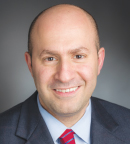Because of the COVID-19 pandemic, oncology providers from around the world had to forgo their annual trip to McCormick Place—but the show did go on. We all realized important research can still be presented, clinicians and fellow researchers will still listen, and ASCO presentations will still inform the delivery of cancer care in 2020. We at The ASCO Post found the caliber of research, presented in a virtual format, to be as impressive as ever. Along with the dozens of studies we covered in depth, here is a brief snapshot of others of interest on novel therapies for both solid and hematologic malignancies.
Pembrolizumab for Relapsed or Refractory Classical Hodgkin Lymphoma
Treatment with pembrolizumab significantly improved progression-free survival in patients with classical Hodgkin lymphoma compared with standard brentuximab vedotin, according to the results of the phase III KEYNOTE-204.1
Median progression-free survival was 13.2 months vs 8.3 months with brentuximab vedotin (P = .00271), an absolute difference of 4.9 months favoring pembrolizumab. Pembrolizumab’s benefit on progression-free survival was seen in all key subgroups: eligible for autologous stem cell transplant (ASCT), primary refractory disease, and brentuximab-naive.
“Based on these findings, pembrolizumab should be considered the preferred treatment option and new standard of care for relapsed or refractory classical Hodgkin in patients who have relapsed post-ASCT or are ineligible for ASCT,” said lead author John Kuruvilla, MD, of Princess Margaret Cancer Centre, Toronto, Canada.

John Kuruvilla, MD
For patients with classical Hodgkin lymphoma who relapse, treatment is salvage chemotherapy and ASCT. But prior to this study, there was no good option for patients who are ineligible for this treatment approach due to chemotherapy-refractory disease, age, or comorbidities.
KEYNOTE-204 randomly assigned 304 patients 1:1 to pembrolizumab at 200 mg every 3 weeks vs intravenous brentuximab vedotin at 1.8 mg/kg every 3 weeks. Patients were either post-ASCT or ASCT-ineligible. Both brentuximab-naive and brentuximab-treated patients were eligible for the trial.
Median follow-up was 24.7 months. In the primary analysis, pembrolizumab significantly improved progression-free survival over brentuximab vedotin, reducing the risk of disease progression or death by 35% (P = .00271). The 12-month progression-free survival rate was 53.9% with pembrolizumab vs 35.6% with brentuximab.
Compared with brentuximab vedotin, pembrolizumab reduced the risk of disease progression or death by 39% in patients who did not have ASCT; 48% in patients with primary refractory disease; 66% in patients with prior brentuximab; and 33% in brentuximab-naive patients.
The objective response rate was 65.6% with pembrolizumab and 54.2% with brentuximab. The median duration of response was longer with pembrolizumab: 20.7 months vs 13.8 months.
Grade 3 to 5 treatment-related adverse events were reported in 19.6% of the pembrolizumab group vs 25% of the brentuximab group. There was one death in the pembrolizumab group due to grade 5 pneumonia.
There were more immune-mediated adverse events seen with pembrolizumab; the most common of these events were hypothyroidism (18.9%) and pneumonitis (10.8%). Of 16 patients with pneumonitis, 15 required corticosteroids, and 12 cases resolved.
Selinexor Improves Outcomes in Myeloma
When added to bortezomib and dexamethasone in patients with relapsed or refractory multiple myeloma, selinexor significantly improved progression-free survival and response rates, with a lower incidence of peripheral neuropathy, compared with bortezomib/dexamethasone alone, according to the results of the global phase III BOSTON trial.2
BOSTON is the first phase III study to evaluate the benefit of this regimen for relapsed or refractory multiple myeloma. These findings were presented by Meletios A. Dimopoulos, MD, of the National and Kapodistrian University of Athens School of Medicine, Greece.

Meletios A. Dimopoulos, MD
Selinexor, a first-in-class oral inhibitor of XPO1-mediated nuclear export, reactivates tumor suppressor proteins. It was approved in 2019 in combination with dexamethasone for heavily pretreated patients whose disease is refractory to at least two proteasome inhibitors, two immunomodulatory agents, and an anti-CD38 monoclonal antibody.
In the BOSTON study, 402 previously treated patients received bortezomib (1.3 mg/m2) plus dexamethasone (20 mg) twice weekly or the same regimen plus selinexor at 100 mg once weekly. In the selinexor arm, the bortezomib dose was reduced by 40%, and the dose of dexamethasone was reduced by 25% at 24 weeks. Patients experiencing disease progression on bortezomib/dexamethasone could cross over to the triplet or selinexor plus dexamethasone.
Selinexor/bortezomib/dexamethasone significantly prolonged median progression-free survival compared with the doublet: 13.93 months vs 9.46 months (hazard ratio [HR] = 0.70; P = .0075). This was true for all subgroups, including patients with 17p deletions and those previously treated with lenalidomide.
“As lenalidomide is often used in the front-line setting and with daratumumab, having an immunomodulatory drug–free option in the relapsed setting with a novel mode of action is an important finding from the BOSTON trial,” said Dr. Dimopoulos.
Response rates were also significantly higher with the triplet (76.4% vs 62.3%; P = .0012). Median overall survival was not reached in the selinexor group and was 25 months in the doublet group (HR = 0.84; P= .19). A significantly longer duration of response and time to next therapy were achieved with selinexor, and peripheral neuropathy grade ≥ 2 was less (21% vs 34%; P = .0013). The triplet was, however, associated with more thrombocytopenia, fatigue, nausea, and treatment-related discontinuations of therapy.
“Overall, these data indicate the once-weekly regimen of selinexor plus bortezomib and dexamethasone could be a new standard of care and, by requiring 40% fewer clinic visits, a most convenient triplet therapy,” said Dr. Dimopoulos.
Savolitinib vs Sunitinib in MET-Driven Papillary Renal Cell Carcinoma
Targeting MET alterations with savolitinib appears to be a better strategy than sunitinib for patients with MET-driven papillary renal cell carcinoma, according to the results of the open-label, randomized, phase III SAVOIR trial.3 Patients with MET-driven metastatic papillary renal cell carcinoma treated with savolitinib had numerically longer progression-free survival, overall survival, and objective response rates compared with sunitinib. The results were simultaneously published in JAMA.4
Although 254 patients were screened, just 60 patients were enrolled, and 14 of them (23%) were female. Among randomly assigned patients, 12% of the savolitinib group and 37% of the sunitinib group were women.
The authors explained that the low number of randomly assigned patients was due to the trial being halted early since a concurrent study on molecular outcomes suggested MET alterations did not appear to be a negative predictive factor for treatment outcomes with sunitinib.
Median progression-free survival was 7 months with savolitinib vs 5.6 months with sunitinib, but the difference was not statistically significant. At data cutoff, 9 patients (27%) in the savolitinib group had died vs 13 (48%) in the sunitinib group. Median overall survival was not reached in the savolitinib group vs 13.2 months in the sunitinib group. The objective response rate was 27% vs 7%, respectively. The median duration of response could not be calculated at the early time point of analysis.
Savolitinib decreased the rate of grade ≥ 3 adverse events almost in half: 42% vs 81% with sunitinib. Also, dose modifications were needed much less often with the MET-targeted therapy: 30% vs 74% with sunitinib. Subsequent anticancer therapies were given after discontinuation of study treatment to 36% of the savolitinib group and 19% of those in the sunitinib group.

Toni Choueiri, MD
“These results, with limited efficacy data, favor savolitinib over sunitinib, and savolitinib showed a superior safety and tolerability profile. Although the retrospective molecular study suggested that MET-driven status did not appear to be a negative predictive factor for treatment outcomes, our clinical findings suggest that a MET-targeted approach in MET-driven papillary renal cell carcinoma has the potential to improve treatment [in this setting]. Therefore, a new study with savolitinib in the same population is under consideration,” said lead author Toni Choueiri, MD, of Dana-Farber Cancer Institute, Boston.
Trastuzumab Falls Short as Neoadjuvant Therapy for Esophageal Cancer
The addition of trastuzumab to trimodality neoadjuvant therapy did not improve pathologic complete response rates or disease-free survival in patients with HER2-overexpressing esophageal adenocarcinoma, in the phase III NGR Oncology/RTOG 1010 trial reported by Howard P. Safran, MD, of Rhode Island Hospital and Brown University.5

Howard P. Safran, MD
The open-label, randomized, phase III trial ultimately assigned 203 newly diagnosed patients with stage T1N1–2 or T2–3N0–2 adenocarcinoma of the esophagus to treatment with chemotherapy (paclitaxel, carboplatin) weekly with or without trastuzumab for 6 weeks, plus radiation therapy, followed by surgery. The experimental arm also received trastuzumab maintenance for 13 weeks after surgery. The median follow-up was 5 years.
The addition of trastuzumab did not improve outcomes, as shown here for chemoradiotherapy and chemoradiotherapy plus trastuzumab:
- Median disease-free survival: 14.2 months vs 19.6 months (HR = 0.97; P = .85)
- Estimated 4-year disease-free survival: 30.1% vs 33.1%
- Median overall survival: 38.9 months vs 38.5 months (HR = 1.01; P = .95)
- Pathologic complete response rate: 29% vs 27% (P = .71)
- Completion of surgery: 81% vs 84%.
However, the addition of trastuzumab did not significantly increase treatment-related toxicities, including cardiac events.
“Esophageal cancer and breast cancer [where neoadjuvant trastuzumab has been effective] have differences in genomic alterations that may be associated with resistance to trastuzumab,” explained Dr. Safran. Genomic analyses may potentially identify subsets of patents who may benefit, he added, and future trials will probably assess next-generation HER2 blockade, such as with fam-trastuzumab deruxtecan-nxki (T-DXd), or HER2-directed immunotherapy in such patients.
ARAMIS Trial: Darolutamide in Nonmetastatic Prostate Cancer
An updated analysis of the ARAMIS trial showed that the androgen receptor inhibitor darolutamide plus androgen-deprivation therapy significantly improved overall survival compared with androgen-deprivation therapy alone in men with nonmetastatic castration-resistant prostate cancer.6
With further follow-up, darolutamide reduced the risk of death by 31% compared with placebo (P = .003). Darolutamide also delayed the time to pain progression by 35% (P < .001), the time to first initiation of treatment with cytotoxic chemotherapy by 42% (P < .001), and the time to first symptomatic skeletal event by 52% (P = .005) vs androgen-deprivation therapy alone. These findings were similar to those in the primary analysis.
Previously published results in 1,509 patients enrolled in the phase III ARAMIS trial showed that the primary endpoint was met: metastasis-free survival was a median of 40.4 months with darolutamide vs 18.4 months with androgen-deprivation therapy alone (P < .001).
An updated analysis did not reveal any new treatment-emergent adverse events associated with darolutamide from the primary analysis of ARAMIS.

Karim Fizazi, MD, PhD
“Men with nonmetastatic castration-resistant prostate cancer typically do not have cancer symptoms,” said lead author Karim Fizazi, MD, PhD, of Institut Gustave Roussy, Villejuif, France. “In selecting treatment for these patients, my goal as a clinician is to improve their overall survival while limiting side effects and drug interactions. These data add to the growing evidence for darolutamide as an effective treatment option, with proven tolerability that extends patients’ lives and delays cancer symptoms.”
SPARTAN Trial: Apalutamide in Nonmetastatic Prostate Cancer
The SPARTAN trial had a similar design and patient population as ARAMIS, and the experimental androgen receptor inhibitor in this case was apalutamide.7 The final results of the phase III SPARTAN trial showed that apalutamide plus androgen-deprivation therapy significantly improved overall survival vs androgen-deprivation therapy plus placebo in men with nonmetastatic castration-resistant prostate cancer.
At a median follow-up of 52 months, median overall survival was 73.9 months with apalutamide plus androgen deprivation therapy vs 59.9 months with androgen-deprivation therapy plus placebo (P = .0161)—a 22% improvement favoring apalutamide. Sensitivity analyses undertaken to assess the effect of crossover indicated a 21 month survival advantage to apalutamide if the benefit of crossover treatment was taken into account in the placebo group’s survival. Apalutamide also significantly increased the time to cytotoxic chemotherapy compared with the control arm (P = .0001).
“This final analysis of SPARTAN demonstrated that apalutamide significantly improved survival in men with nonmetastatic castration-resistant prostate cancer,” said lead author Eric J. Small, MD, of the University of California San Francisco Helen Diller Family Comprehensive Cancer Center. “And it did so despite a high rate of subsequent active therapy in the placebo group.” At the time of developing metastases, the study provided open-label abiraterone acetate therapy. Consequently, over 80% of placebo patients went on to receive life-prolonging (U.S. Food and Drug Administration [FDA]-approved) therapy, suggesting that the survival benefit observed with apalutamide was not a reflection of inadequate therapy in the placebo group.

Eric J. Small, MD
SPARTAN enrolled 1,207 patients and randomly assigned them 2:1 to apalutamide vs placebo. All men were on -background androgen-deprivation therapy. The primary endpoint was metastasis-free survival, defined as the time from randomization to the first detection of distant metastasis on imaging or death.
In the primary analysis of the trial, apalutamide significantly improved metastasis-free survival compared with placebo: 40.5 months vs 16.2 months, respectively (P < .001). Once these results were made available, the independent data monitoring committee recommended unblinding of the study, and all eligible patients receiving placebo crossed over to the apalutamide arm.
With longer follow-up, the safety profile of apalutamide was similar to the interim analysis. A unique feature of this study is that toxicity was evaluated every month (as opposed to every 3 or 4 months) resulting in a more precise description of adverse events.
Hypertension was the most common treatment-emergent grade ≥ 3 adverse event, occurring in 16.2% of apalutamide patients, compared with 12.3% of placebo patients. Other grade 3 or 4 adverse events included rash (5.2% compared with 0.3% in the placebo group), fractures (4.9% vs 1 %), falls (2.7% vs 0.8%), ischemic heart disease (2.6% vs 1.8%), and diarrhea (1.5% vs 0.5%). Grade 3 or 4 fatigue was seen in 0.9% of apalutamide recipients compared with 0.3% of placebo recipients.
HER2-Mutant NSCLC Responds to T-DXd
The novel anti-HER2 agent T-DXd achieved a meaningful tumor response in patients with HER2-mutant unresectable and/or metastatic nonsquamous non–small cell lung cancer (NSCLC) whose disease had progressed on one or more systemic therapies, in an analysis of the phase II DESTINY-Lung01 trial.8
The primary endpoint of confirmed objective response rate by independent central review was 61.9% for patients treated with T-DXd. The estimated disease control rate was 90.5%, and mean progression-free survival was 14 months. The median duration of response and overall survival had not been reached at the time of data cutoff.
“Although there have been important advances in the treatment of lung cancer over the past decade, there are still patients whose tumors continue to progress despite treatments with newer targeted agents or immunotherapies,” said lead author Egbert F. Smit, MD, PhD, of the Netherlands Cancer Institute in Amsterdam. “Understanding additional targets for treatment, such as HER2, is critical to advancing treatment options for these patients, and the results seen in the DESTINY-Lung01 trial are very encouraging.”

Egbert F. Smit, MD, PhD
T-DXd is a HER2-directed antibody-drug conjugate approved in the United States for the treatment of patients with unresectable or metastatic HER2-positive breast cancer treated with two or more prior anti–HER2-based regimens. These data extend the potential application of T-DXd to the treatment of HER2-positive lung cancer. There is currently no agent approved specifically to treat HER2-positive NSCLC progressing on previous therapies. T-DXd was recently granted Breakthrough Therapy status by the FDA for the treatment of HER2-positive NSCLC progressing on or after platinum-based therapy.
DESTINY-Lung01 is a global, phase II, multicenter, two-cohort trial that enrolled 170 patients with HER2-positive or HER2-overexpessing NSCLC. At baseline, patients had been previously treated with a median of two lines of prior therapy (90.5% received platinum-based therapy and 54.8% received immune checkpoint inhibitors).
The median duration of treatment was 7.5 months, and the median duration of follow-up was 8 months. Data cutoff was November 25, 2019; at that time, 45.2% of patients remained on treatment with T-DXd. No new safety concerns were identified with T-DXd.
Sorafenib vs Donafenib in Liver Cancer
In an open-label, randomized, phase II/III trial, unresectable or metastatic hepatocellular carcinoma treated in the first-line setting with donafenib had a significantly longer overall survival, compared with sorafenib—12.1 months vs 10.3 months (HR = 0.83; P = .0363)—but no differences emerged for progression-free survival (approximately 4 months in each), response rate (< 5% in each), or disease control rate (approximately 30% each).9
The multikinase inhibitor donafenib also appeared to be better tolerated, with significantly fewer drug-related adverse events leading to treatment interruption (25.2% vs 36.1%; P = .0025) and fewer treatment-related adverse events grade ≥ 3 (37.5% vs 49.7%; P = .0018), according to Feng Bi, MD, of Sichuan University, Chengdu, China.

Marcus Noel, MD
Highlights session discussant Marcus Noel, MD, of Lombardi Comprehensive Cancer Center and MedStar Georgetown University Hospital, cautioned that this study was conducted in China and is not an international study. “I’m not sure whether this study can be extrapolated across the globe, but certainly donafenib has a place in first-line therapy, further pushing sorafenib to the side,” he said.
CDK4/6 Inhibitor Trilaciclib Seems Myeloprotective
The addition of trilaciclib to standard chemotherapy in the treatment of extensive-stage small cell lung cancer “significantly and meaningfully” reduced chemotherapy-induced myelosuppression and its consequences, with no detrimental effect on survival, a pooled analysis of three randomized studies has shown.10
Trilaciclib is an intravenously administered inhibitor of cyclin-dependent kinases 4/6 (CDK4/6) that protects hematopoietic stem and progenitor cells by preventing proliferation during the administration of chemotherapy. Small cell lung cancers are Rb null (ie, lacking Rb tumor-suppressor function), so there was no effect on tumor cells expected; rather, it was studied to attempt to improve quality of life in patients with small cell lung cancer receiving standard regimens.
For the current study, results from three randomized, double-blind, placebo-controlled trials in patients with extensive-stage small cell lung cancer were pooled to evaluate trilaciclib’s effect on myelosuppression endpoints. The results were reported by Jared Weiss, MD, of Lineberger Comprehensive Cancer Center in North Carolina.

Jared Weiss, MD
The 242 patients received standard chemotherapy (etoposide/carboplatin, etoposide/atezolizumab, or topotecan) plus trilaciclib or placebo. In the intent-to-treat analysis, the addition of trilaciclib significantly reduced numerous measures of myelosuppression, toxicity, and the need for supportive care interventions, as shown here for the placebo arm vs the trilaciclib arm:
- Severe neutropenia: 52.9% vs 11.4% (P < .0001)
- Duration of severe neutropenia: 5 (standard deviation = 1.8) vs 0 (standard deviation = 5.1) days (P < .0001)
- Febrile neutropenia: 9.2% vs 3.3% (P = .099)
- Growth factor support: 56.3% vs 28.5% (P < .0001)
- Grade 3 or 4 anemia: 31.9% vs 20.3% (P = .028)
- Reduced need for red blood cell transfusions, erythropoietin-stimulating agents, antibiotics, and dose reductions
- Fewer infectious serious adverse events and thrombocytopenia.
Interestingly, trilaciclib also reduced alopecia (13.5% with trilaciclib and 34% with placebo). Trilaciclib seemed to have no detrimental effect on overall survival, which was approximately 11 months in each arm, or progression-free survival, which was 5 months in each.
“Trilaciclib has the potential to become a new standard of care for preventing myelosuppression in small cell lung cancer,” Dr. Weiss said. A new drug application submission for trilaciclib for myelopreservation in small cell lung cancer was submitted in June 2020. It is also being studied in breast cancer and in colorectal cancer.
Aggressive Tumor Responds to Oral Paclitaxel
Oral paclitaxel with encequidar showed activity and tolerability in the treatment of unresectable, nonmetastatic, cutaneous angiosarcoma in an elderly population of 26 patients (median age, 75 years) enrolled in a phase II study.11 One patient had been previously treated with chemotherapy. Lesions occurred on the scalp, breasts, and legs.
The clinical benefit rate was 100%, and 27% were complete responses. Median progression-free survival was 36 weeks, and 1-year overall survival was 92%. All patients had a reduction in tumor size, and curative resection became possible for some patients. Peripheral neuropathy occurred in 11% of patients, and all were grade 1.
“The responses to oral paclitaxel observed thus far are very encouraging, especially given the highly aggressive nature of cutaneous angiosarcoma and the lack of approved treatment options for this disease,” said Vinod Ravi, MD, MBA, of The University of Texas MD Anderson Cancer Center, Houston.

Vinod Ravi, MD, MBA
Oral paclitaxel plus encequidar is a novel oral formulation of paclitaxel. The taxane is made bioavailable by combining it with the minimally absorbed P-glycoprotein pump inhibitor encequidar. Patients in the study received oral paclitaxel at 205 mg/m2, with oral encequidar at 15 mg given once daily for 3 consecutive days per week for 25 weeks.
Dr. Ravi further noted the convenience and cost-effectiveness of an oral regimen. “Decreasing exposure of elderly patients to hospitals has a distinct advantage, particularly during the COVID-19 pandemic.”
Secondary Malignancies With PARP Inhibitors
As poly (ADR-ribose) polymerase (PARP) inhibitors are increasingly used in breast, ovarian, and, most recently, prostate cancers, the side-effect profile of these drugs comes into better focus. Myelodysplastic syndrome and acute myeloid leukemia have occurred in about 2.8% of patients treated with olaparib, veliparib, niraparib, and rucaparib, according to a retrospective review of the FDA Adverse Event Reporting System for the years 2017 through 2019.12
The authors identified a total of 8,812 adverse events for the four PARP inhibitors during the period of the study. Of them, 6,692 were considered to be serious, and 1,319 deaths occurred. There were 251 reports of myelodysplastic syndrome and acute myeloid leukemia, comprising 2.8% of the total events reported.

Samip Master, MD

Richard P. Mansour, MD
“Secondary malignancies like myelodysplastic syndrome and acute myeloid leukemia have been reported in clinical trials and long-term follow-up [of patients treated with PARP inhibitors], mostly in patients with BRCA-mutated disease. Based on these retrospective data, acute myeloid leukemia/myelodysplastic syndrome is an adverse event associated with PARP inhibitors and needs to be monitored,” wrote the authors of this poster presentation, Samip Master, MD, and Richard P. Mansour, MD, of Louisiana State University Health, Shreveport.
FOR MORE INFORMATION
For more on the BOSTON and DESTINY-Lung01 trials, see separate interviews with Meletios A. Dimopoulos, MD, and Egbert F. Smit, MD, PhD, respectively, on The ASCO Post Newsreels at ascopost.com/videos.
“It seems that olaparib and veliparib carry a higher risk of these secondary malignancies compared with the other two PARP inhibitors,” they further noted.
DISCLOSURE: KEYNOTE-204 was supported by Merck. SAVOIR was funded by AstraZeneca. ARAMIS was funded by Bayer. SPARTAN was funded by Janssen. DESTINY-Lung01 was sponsored by Daiichi Sankyo. The donafenib study was sponsored by Suzhou Zelgen Biopharmaceuticals. Dr. Kuruvilla has received honoraria from, or consulted/advised for, AbbVie, Amgen, AstraZeneca, Bristol-Myers Squibb, Celgene, Gilead, Janssen, Karyopharm Therapeutics, Merck, Novartis, Pfizer, Roche, and Seattle Genetics and has received research funding from Celgene, Janssen, and Roche. Dr. Dimopoulos has received honoraria from, or consulted/advised for, Amgen, Bristol-Myers Squibb, Celgene, Janssen-Cilaq, and Takeda. Dr. Choueiri has equity ownership or stock options in Pionyr and Tempest; has consulted or advised for Pfizer, Bristol-Myers Squibb, Merck, Novartis/GlaxoSmithKline, Exelixis/Ipsen, Eisai, Roche/Genentech, EMD Serono/Pfizer, Lilly Oncology, Peloton Therapeutics, Heron Therapeutics; and has received grant/research/clinical trial support from AstraZeneca, BMS, Pfizer, Exelixis, Roche, Eisai, Peloton, Merck, Novartis, GSK, and Bayer. Dr. Fizazi has received honoraria from, or consulted/advised for, Amgen, Astellas Pharma, AstraZeneca, Bayer, Clovis Oncology, Curevac, ESSA, Janssen Oncology, Orion Pharma GmbH, Roche/Genentech, and Sanofi and has received travel funds from Amgen and Janssen. Dr. Small has received honoraria from Janssen; has consulted/advised for BeiGene, Fortis, Janssen Oncology, Teon Therapeutics, Tolero Pharmaceuticals; and has received travel funding from Janssen. Dr. Smit has received institutional fees for consulting/advising for AstraZeneca, Bayer, Boehringer Ingelheim, Bristol-Myers Squibb, Daiichi Sankyo, Lilly, Merck, KGaA, MSD Oncology, Novartis, Regeneron, Roche/Genentech, Seattle Genetics, and Takeda and received institutional research funding from AstraZeneca, Bayer, Boehringer Ingelheim, Bristol-Myers Squibb, and Roche/Genentech. Dr. Noel reported no conflicts of interest. Dr. Weiss has received honoraria from Pfizer; has served in consulting or advisory roles for AbbVie, AstraZeneca, Azitra, Blueprint Medicines, Celgene, Eli Lilly, EMD Serono, G1 Therapeutics, Genentech, Inivata, Jounce Therapeutics, Nanobiotix, Pfizer, and Rakuten; and received institutional research funding for his role in accrual to the G1T28-02 study. Dr. Ravi has consulted/advised for Daiichi Sankyo; has received author royalties from UpToDate; has received travel funds from Daiichi Sankyo; and has received research funding from Novartis. Dr. Mansour has reported stock or other ownership interests in AbbVie, AstraZeneca, Bluebird Bio, CRISPR Therapeutics, Editas Medicine, Johnson & Johnson, and Novartis; and has consulted/advised for AllScripts. Drs. Safran, Bi, and Master reported no conflicts of interest.
REFERENCES
1. Kuruvilla J, Ramchandren R, Santoro A, et al: KEYNOTE-204: Randomized, open-label, phase III study of pembrolizumab versus brentuximab vedotin in relapsed or refractory classic Hodgkin lymphoma. ASCO20 Virtual Scientific Program. Abstract 8005.
2. Dimopoulos MA, Delimpasi S, Simonova M, et al: Weekly selinexor, bortezomib and dexamethasone versus twice weekly bortezomib and dexamethasone in patients with multiple myeloma after one to three prior therapies: Initial results of the phase III BOSTON study. ASCO20 Virtual Scientific Program. Abstract 8501.
3. Choueiri TK, Heng DYC, Lee JL, et al: SAVOIR: A phase III study of savolitinib versus sunitinib in patients with MET-driven papillary renal cell carcinoma. ASCO20 Virtual Scientific Program. Abstract 5002.
4. Choueiri TK, Heng DYC, Lee JL, et al: Efficacy of savolitinib vs sunitinib in patients with MET-driven papillary renal cell carcinoma: The SAVOIR phase 3 randomized clinical trial. JAMA Oncol. May 29, 2020 (early release online).
5. Safran H, Winter KA, Wigle DA, et al: Trastuzumab with trimodality treatment for esophageal adenocarcinoma with HER2 overexpression: NRG Oncology/RTOG 1010. ASCO20 Virtual Scientific Program. Abstract 4500.
6. Fizazi K, Shore ND, Tammela T, et al: Overall survival results of phase III ARAMIS study of darolutamide added to androgen deprivation therapy for nonmetastatic castration-resistant prostate cancer. ASCO20 Virtual Scientific Program. Abstract 5514.
7. Small EJ, Saad F, Chowdhury S, et al: Final survival results from SPARTAN, a phase III study of apalutamide versus placebo in patients with nonmetastatic castration-resistant prostate cancer. ASCO20 Virtual Scientific Program. Abstract 5516.
8. Smit EF, Nakagawa K, Nagasaka M, et al: Trastuzumab deruxtecan (T-DXd) in patients with HER2-mutated metastatic non-small lung cancer: Interim results of DESTINY-Lung01. ASCO20 Virtual Scientific Program. Abstract 9504.
9. Bi F, Qin S, Gu S, et al: Donafenib versus sorafenib as first-line therapy in advanced hepatocellular carcinoma: An open-label, randomized, multicenter phase II/III trial. ASCO20 Virtual Scientific Program. Abstract 4506.
10. Weiss J, Goldschmidt J, Zoran A, et al: Myelopreservation and reduced use of supportive care with trilaciclib in patients with small cell lung cancer. ASCO20 Virtual Scientific Program. Abstract 12096.
11. Ravi V, Wagner M, Chen TWW, et al: A phase II study of oraxol in the treatment of unresectable cutaneous angiosarcoma. ASCO20 Virtual Scientific Program. Abstract 11517.
12. Master SR, Mansour RP: Myelodysplastic syndrome and acute myeloid leukemia as side effect of PARP inhibitors. ASCO20 Virtual Scientific Program. Abstract 3601.

